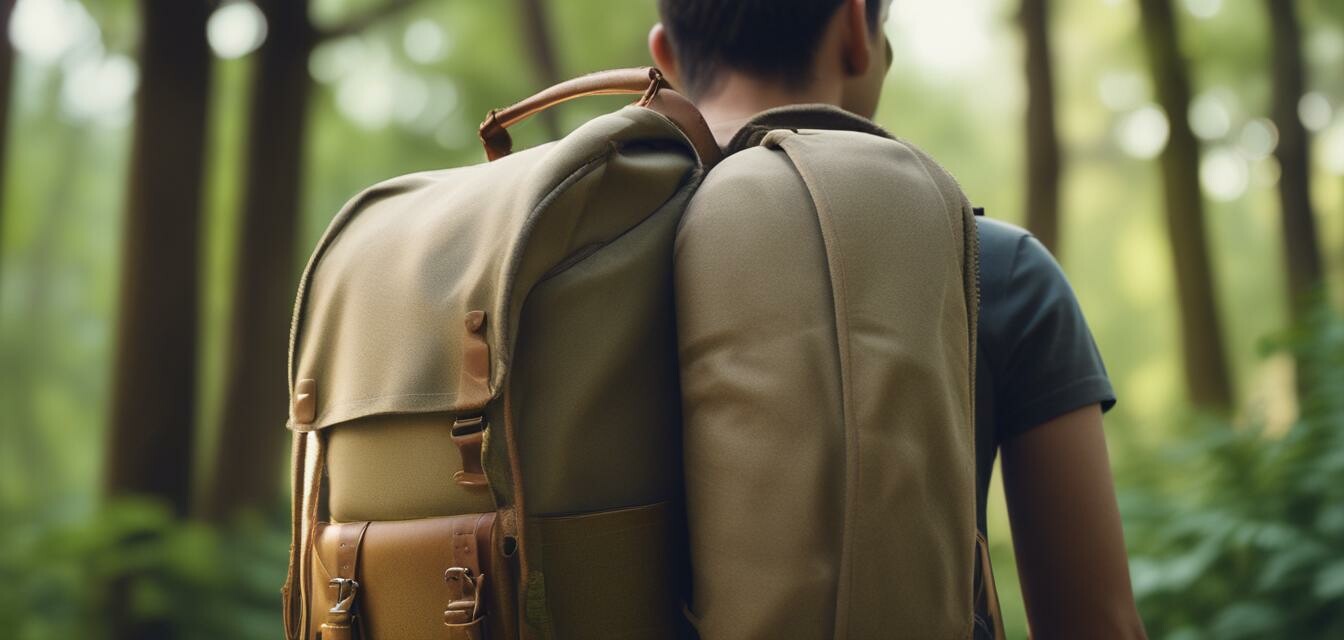
Eco-Friendly Backpacks: Sustainable Choices from Dakine
- Explore the varying eco-friendly materials used in Dakine's backpacks.
- Understand the impact of sustainable backpacks on the environment.
- Learn about the best eco-friendly options for different lifestyles.
- Discover the importance of durability in sustainable products.
- Find tips on how to choose the right backpack based on your eco-conscious needs.
As the world moves towards more sustainable practices, backpack manufacturers, including Dakine, are stepping up by offering eco-friendly options for the environmentally conscious shopper. From recycled materials to sustainable production methods, Dakine is committed to reducing its carbon footprint while delivering high-quality, durable packs. This guide will walk you through the various eco-friendly choices available, ensuring you can make informed decisions while enjoying your lifestyle, whether it’s commuting, hiking, or traveling.
What are eco-friendly backpacks?
Eco-friendly backpacks are designed with environmental sustainability in mind. They incorporate materials and production processes that minimize harm to the environment. These backpacks not only help you reduce your ecological footprint but also often provide the same level of durability and functionality as conventional backpacks.
Materials Used in Sustainable Backpacks
| Material | Description | Environmental Benefit |
|---|---|---|
| Recycled Polyester | Made from post-consumer plastic bottles, it reduces waste in landfills. | Conserves resources and decreases carbon emissions during production. |
| Cotton | Natural and biodegradable, often organic to reduce chemical use. | Sustainable farming practices can improve soil health. |
| Nylon 6,6 | A durable synthetic material with options that reduce environmental impact. | Recycling nylon can save resources and reduce waste. |
| Hemp | A hardy plant that grows quickly and requires less water. | Biodegradable and a strong, sustainable alternative to cotton. |
Why Choose Eco-Friendly Backpacks?
Choosing eco-friendly backpacks is a responsible decision for several reasons:
- Reduced environmental impact: These packs help conserve natural resources and reduce pollution.
- Durability: Many eco-friendly materials are designed to withstand the rigors of everyday use.
- Supporting sustainable practices: By purchasing eco-friendly products, you encourage companies, like Dakine, to continue implementing sustainability in their operations.
- Stylish options: Eco-friendly doesn't mean compromising on style; many backpacks are both functional and trendy.
Top Eco-Friendly Backpacks from Dakine
Here we discuss some of the standout features of Dakine’s eco-friendly backpacks:
| Backpack Style | Key Features | Ideal For |
|---|---|---|
| School and Commuter Backpacks | Spacious compartments, laptop sleeves, and made from recycled materials. | Students and working professionals. |
| Outdoor Adventure Packs | Water-resistant fabrics, multiple pockets for gear, made with sustainability in mind. | Camping, hiking, and outdoor enthusiasts. |
| Travel Backpacks | Ample storage space, durable build, eco-conscious production. | Travelers and adventurers. |
Tips for Choosing an Eco-Friendly Backpack
Consider these points when selecting your ideal eco-friendly backpack:
- Research materials: Look for backpacks made from recycled or sustainable materials.
- Check certifications: Look for products certified by credible eco-labels.
- Durability matters: Aim for backpacks with a reputation for longevity to minimize waste.
- Functionality: Explore features that suit your daily life, whether for work, school, or outdoor activities.
Maintaining Your Eco-Friendly Backpack
To ensure your eco-friendly backpack lasts for years, consider the following maintenance tips:
- Clean regularly with mild detergent and water to avoid damaging the material.
- Store it properly to maintain the shape; avoid excessive weight on the straps.
- Avoid exposing it to extreme temperatures that could damage its structure.
- Repair minor damages instead of replacing the backpack to extend its life.
Conclusion
Choosing an eco-friendly backpack from Dakine is not just about purchasing a bag; it's a step towards a more sustainable future. With various options available that cater to different lifestyles and activities, you can make a positive impact while enjoying style and functionality. Prioritize eco-friendly materials, durability, and good maintenance to ensure that your backpack serves you well for years to come.
Pros
- Environmentally sustainable materials.
- Durable and long-lasting designs.
- Wide range of styles for different activities.
- Supports responsible manufacturing practices.
Cons
- Sometimes higher price point than non-eco-friendly backpacks.
- Availability may vary based on demand and stock.
For more information on selecting the perfect backpacks for your lifestyle, be sure to check out our comprehensive Buying Guides. Explore other categories like Casual Daypacks, Outdoor Adventure Packs, and School and Commuter Backpacks for more options that combine style and function.